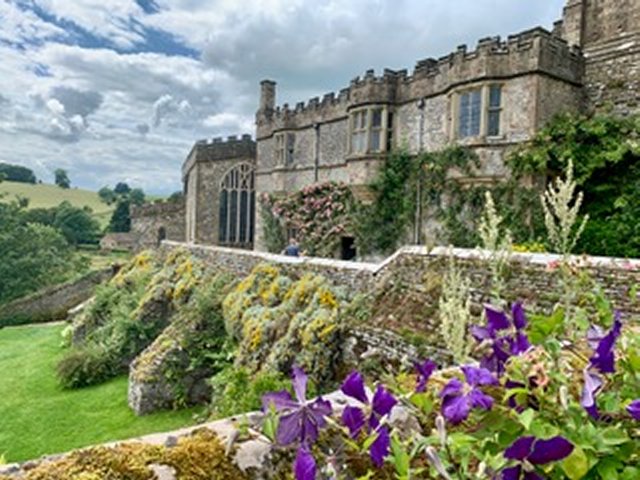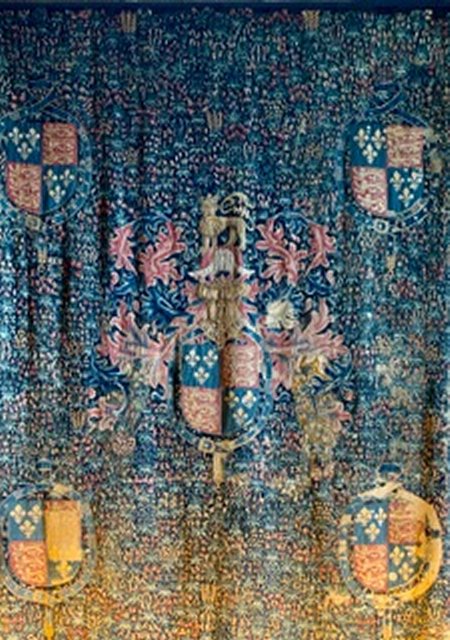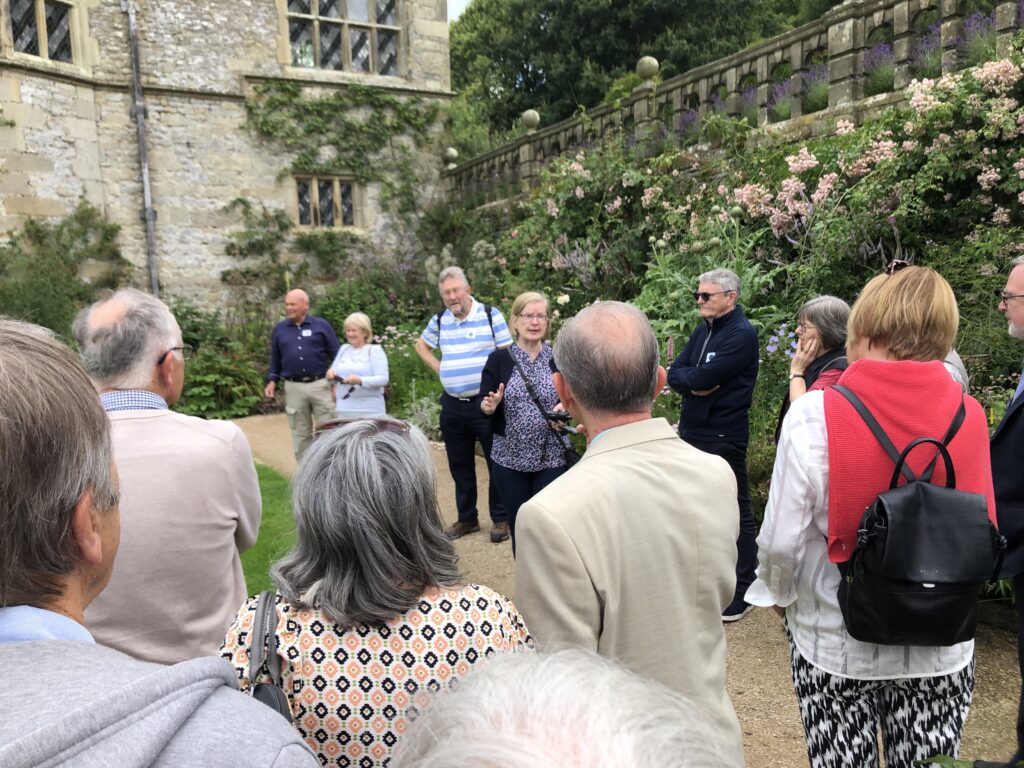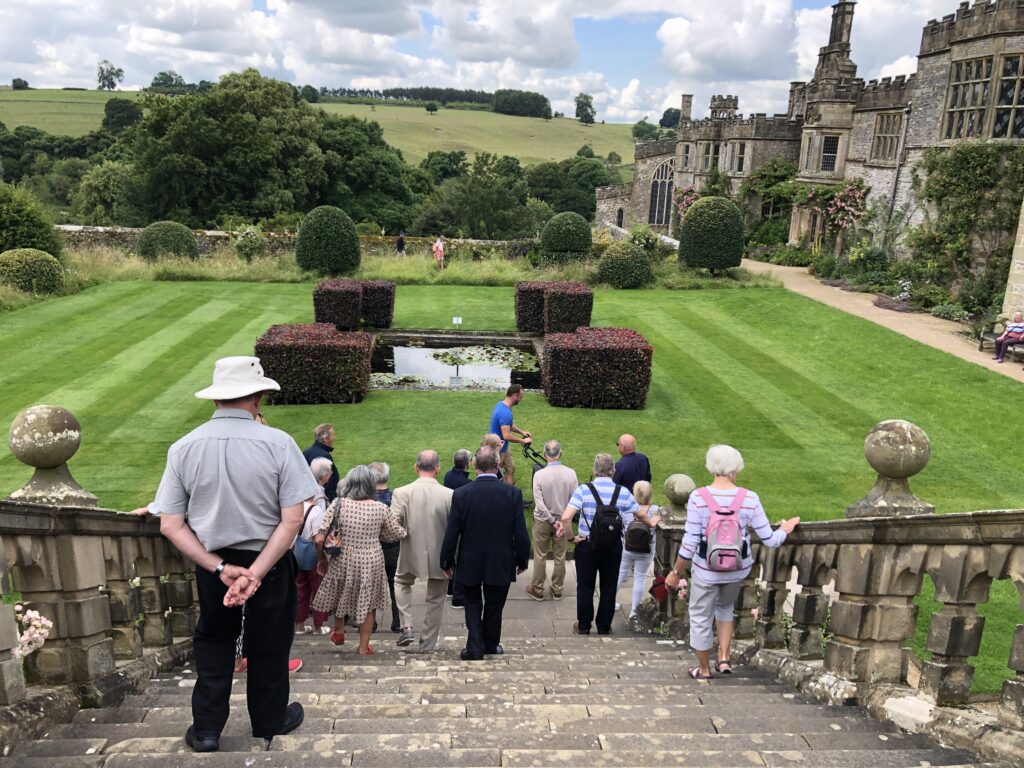Fifteen Probus members and 12 partners shared cars to arrive at Haddon Hall where we were met by our guide Kathryn Barnes, who showed us around the unique medieval fortified house, parts of which date back to King John’s time.
The first mention of a house and chapel on site was in 1180 and they were thought to have been built around 1150 on land held by William Peverel. The Hall with its land stayed in the Vernon family until 1567, before passing to the Manners, remaining with the family until the present day. There have been additions and renovations over the years but the house is unique in that it retains its medieval character yet has a lived-in feel to it – for instance, the pleasant aroma of a recently lit fire in the Banqueting Hall -where there’s a superb tapestry gifted by Henry VIII (below right). Great tapestries from Mortlake hang in other rooms.
The chapel oozes history, with many exposed frescos, including one of three skeletons to remind you of your own mortality. In their day, the polychrome frescos would have been a blaze of colour but were lime-washed after the Reformation. Much of the furniture isn’t original but antiquarian-minded ancestors had brought in beautiful examples of medieval and Tudor oak furniture over the years.
There’s obviously a fire risk and always has been. Priceless tapestries have been lost. The 14th century kitchen was in a separate building for this reason, though no longer functional it was joined to the main house.
The Long Gallery has fantastic oak panelling. Elizabethan leaded windows look as though they’re about to collapse, but they were actually designed in that way, in an alternating convex and concave manner, to diffract sunlight coming through. It was from this room that Sir George Vernon’s daughter Dorothy eloped. One of the subsiding bay windows needed to be totally rebuilt by a local mason in recent years.
Modern stonework from the outside will be indistinguishable from its neighbours after a few years’ weathering.
There’s a small but fascinating museum containing multiple artifacts discovered behind panels and floors during restorations over the years. Fortunately, the Victorians never got their hands on the building, so it completely retains its original design and feel. It laid empty for a couple of centuries but the family were careful to maintain it. Their main residence was, and still is, at Belvoir Castle, the grand home of the Dukes of Rutland.
The gardens were our final destination. They retain their original Elizabethan format. Because the house was empty for a good long time, restoration has been necessary and they now look superb, if a bit of re-wilding’s your thing, with a fine drop below the heavily buttressed walls down to the exquisite River Wye, where yours truly and others dream to fish.




